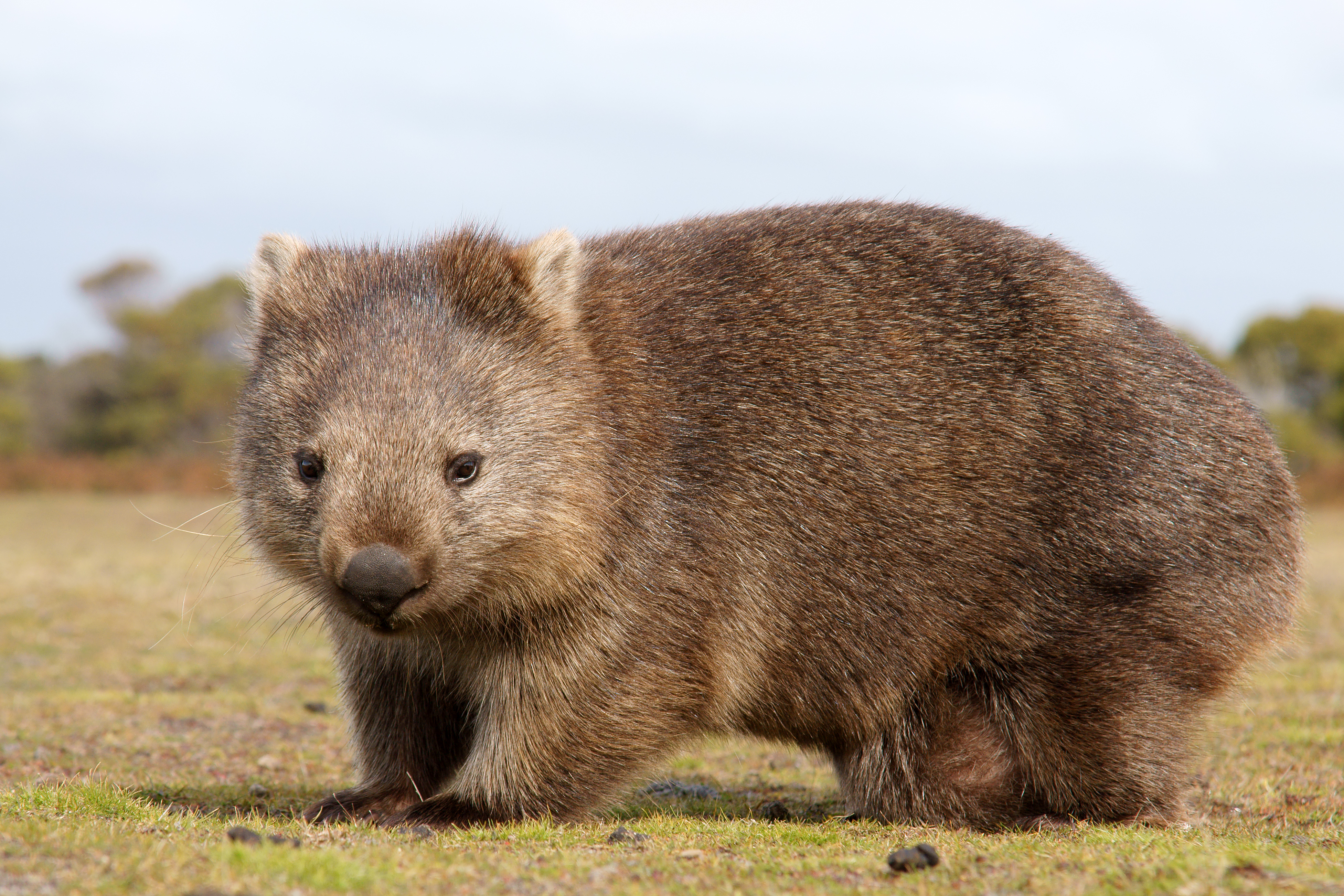Wombat is the name for three stocky, burrowing mammals of Australia. Wombats measure up to 4 feet (1.2 meters) long and weigh from 30 to 75 pounds (14 to 34 kilograms). The three species (kinds) of wombats are the common wombat, the southern hairy-nosed wombat, and the northern hairy-nosed wombat.

Common wombats live in coastal forests and feed mostly on grass, small bushes, and roots. They have thick brown fur. Both species of hairy-nosed wombats live on the Australian plains and eat mainly grass. They have gray fur and white hairs on the nose. Hairy-nosed wombats were once widespread. But their populations have decreased greatly due to loss of habitat and competition for food with livestock and rabbits.
Wombats spend the hot days in underground burrows, only coming out at night to feed. The animals have a highly developed sense of smell. To communicate with one another, they leave their feces (solid bodily waste) in select locations, called latrines. An adult wombat can identify other wombats in the area from the scent of the feces.

Wombats are marsupials. Like other marsupials, wombats give birth to tiny, poorly developed young. The offspring are carried in a pouch on the mother’s belly and remain there for at least six months. A wombat’s pouch opens toward the rear of its body.
See also Giant wombat .
